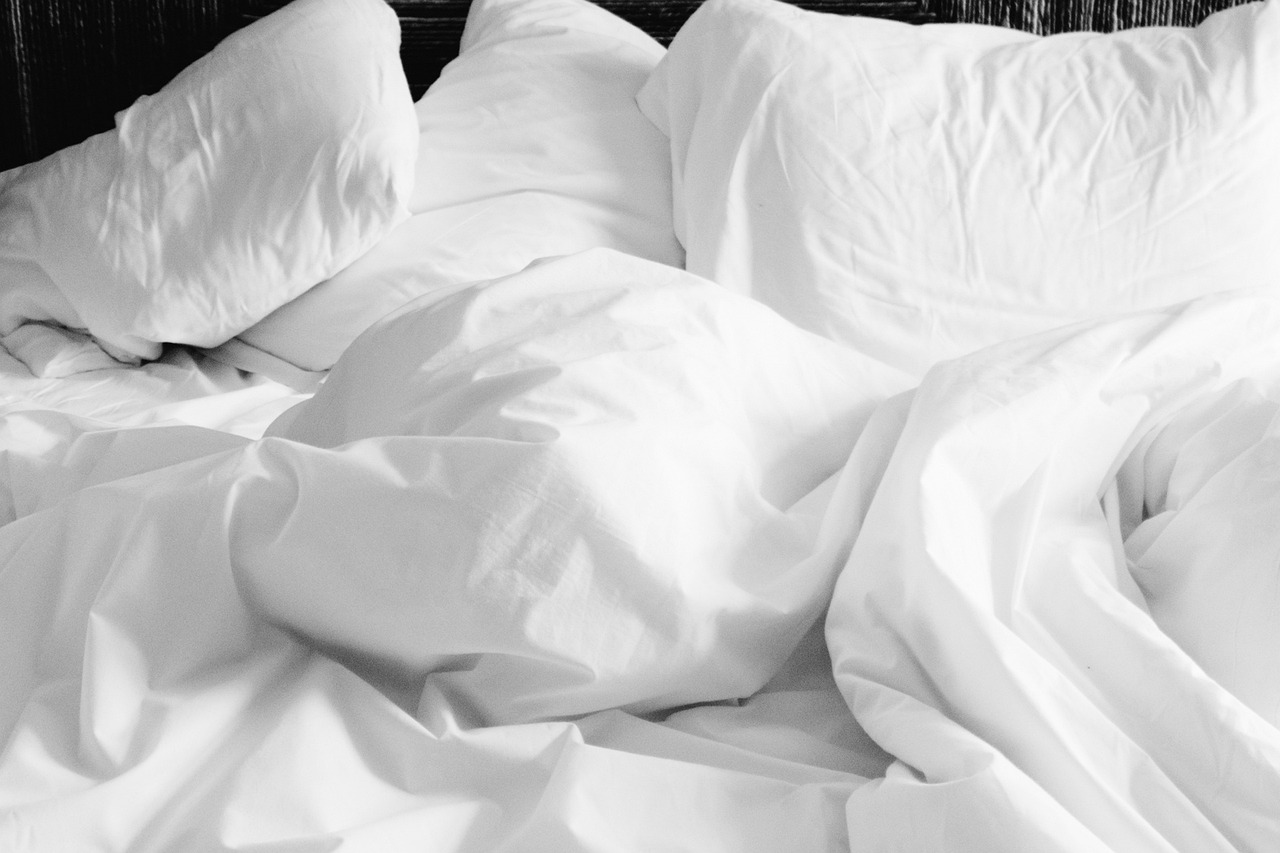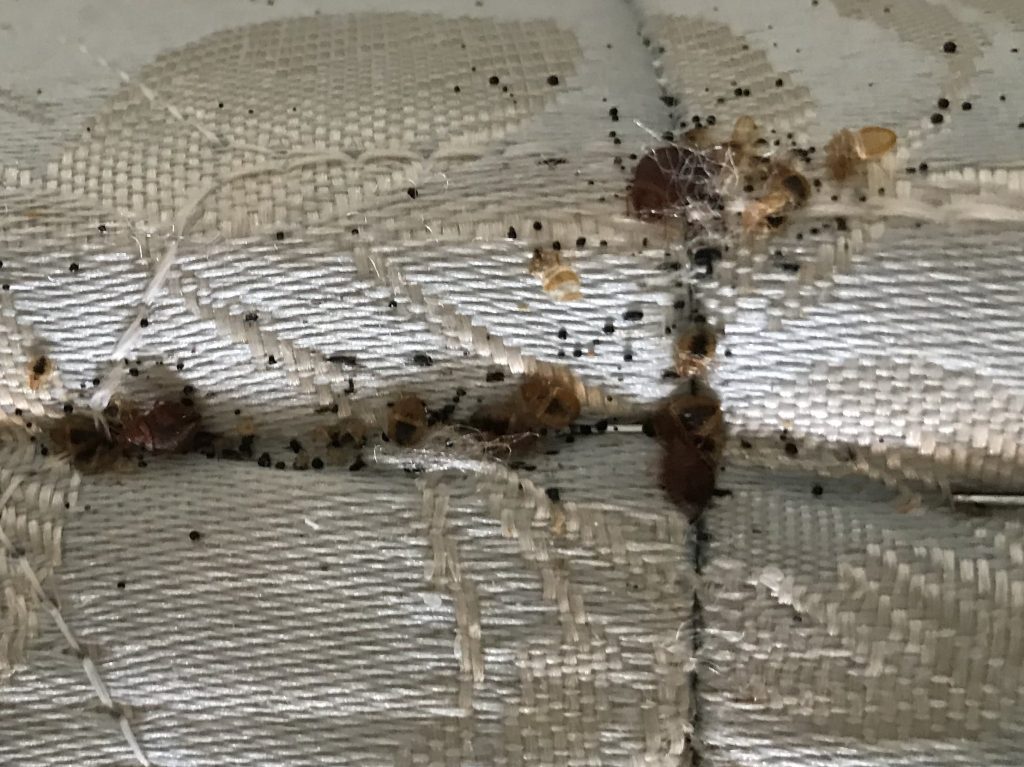
If you live in Olympia, Kelso, Vancouver, Portland, and the surrounding areas, you usually see fewer pests in your house in the winter — with the exception of rodents, of course! But what about bed bugs? Where do they go in the winter? It’s important to consider bed bug prevention, even when the temperatures drop.
Bed bugs in winter
Bed bugs are resilient little pests! Even though the temperatures outside may drop below freezing, bed bugs usually stay within a few feet of human sleeping areas. So the cold winter weather has little impact on the bed bugs in your home. Even while you travel for the holidays, bed bugs will remain in those areas waiting for your return. These insects can live over a year without a blood meal!
Bed bugs can actually thrive in the winter for several reasons:
- Humans are hosts for bed bugs, and we stay indoors more in the winter.
- Homes are heated in the winter making an ideal environment for bed bugs.
- During the holiday season, bed bugs are frequently transported from one residence to another, hitching rides on clothing, luggage, and bags at each new destination.
Think about what happens during the winter. You’re traveling to visit family. Your kids are returning home from college. Family is coming to visit you. You’re staying in hotels. Don’t let fears about bed bugs stop you from enjoying winter travel and winter experiences. Just be vigilant!
Bed bug prevention tips
It’s important to practice bed bug prevention when you travel, when you or your family return from travel, when you welcome new visitors into your home, when you purchase used or secondhand furniture, or if you live in a multi-family home (e.g., an apartment building). As an expert local pest control company, let’s look at these tips for bed bug prevention.
- Minimize clutter in your home to limit potential hiding spots for bed bugs.
- Vacuum your suitcases upon returning from a vacation.
- Wash and dry every item that can be safely put in a machine washer and dryer to kill bed bug eggs, nymphs, and adults.
- Check your sheets for any telltale blood spots and launder often.
- Bring a large plastic trash bag to use for keeping your suitcase covered during hotel stays.
- Carry a small flashlight for quick visual inspections and learn what to look for.
- Avoid bringing second-hand furniture, especially mattresses and box springs, into your home without thorough examination for signs of bed bug infestations.
- The same type of caution should apply when bringing home second-hand clothing. As soon as you get home, wash clothing with hot water and/or dry using a hot temperature.
- Regularly inspect areas where pets and people sleep or hang out for signs of bed bugs.

How to spot bed bugs
Recognizing the signs of bed bugs is an important step in bed bug prevention. Our pest library has detailed information about what bed bugs look like, but here are some basic characteristics:
- Size: Less than ¼” long (nymphs are much smaller)
- Color: Brown or reddish-brown and may have a dark spot in the center of the body (nymphs may be pale).
- Body: Flat, oval-shaped, six legs, short hairs, antennae.
Bed bugs are visible to the naked eye but can be very difficult to locate. You can check for bed bugs, in the seams of mattresses and box springs, and in other hiding places including carpets, curtains, couches, and chairs. Other common hiding places include inside cracks and screw holes of bedside furniture, and headboards. Because bed bugs are the width of a credit card, they can hide in even the smallest spaces.
Bed bugs feed on their hosts during sleep, using piercing-sucking mouthparts to suck up human blood. Their saliva has antisthetic qualities so you may not even feel them bite! This saliva is what causes a reaction to bites in most people and is responsible for the redness of the bite. They feed multiple times while they grow and mature and even as adults to produce eggs., They typically feed on exposed skin like arms, legs, face, neck, hands, and shoulders.
Although bed bugs don’t spread diseases, their bites can leave red welts, rashes, and hives. Besides, just the sight of bed bugs can be a bit distressing, making it tough to get a good night’s sleep. If you think you have bed bugs, it’s important to take care of the problem right away!
How to treat bed bugs
Controlling bed bugs can pose a significant challenge, even for experienced exterminators. This is why we don’t recommend that you treat a bed bug infestation on your own. The rapid reproduction and widespread dispersal of bed bugs, coupled with the resistance of certain populations to chemical treatments, add to the complexity.
The best way to treat bed bugs is to call a professional pest control company. Interstate Pest Management is based right here in the Pacific Northwest. We employ a comprehensive 5-step bed bug treatment system to effectively eliminate and prevent bed bug infestations. We stand out as one of the select companies nationwide holding the Certified Bed Bug Free designation. This certification is granted to businesses dedicated to ongoing certifications and proactive customer service initiatives!
If you want help getting rid of bed bugs, don’t wait. Reach out to us via the provided contact form or call us at (503) 832-4997 right away. We can promptly, effectively, and discreetly address your issue!